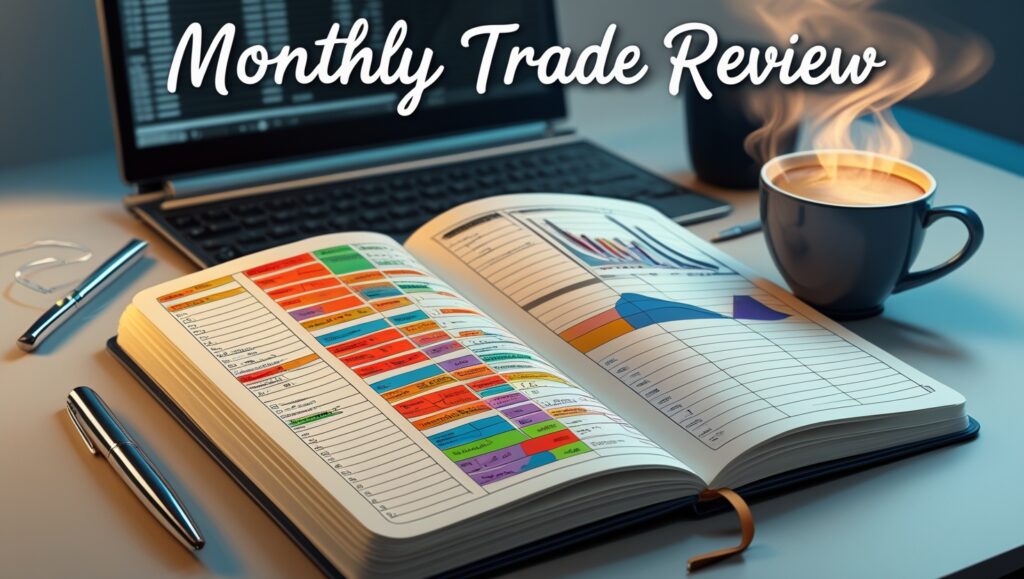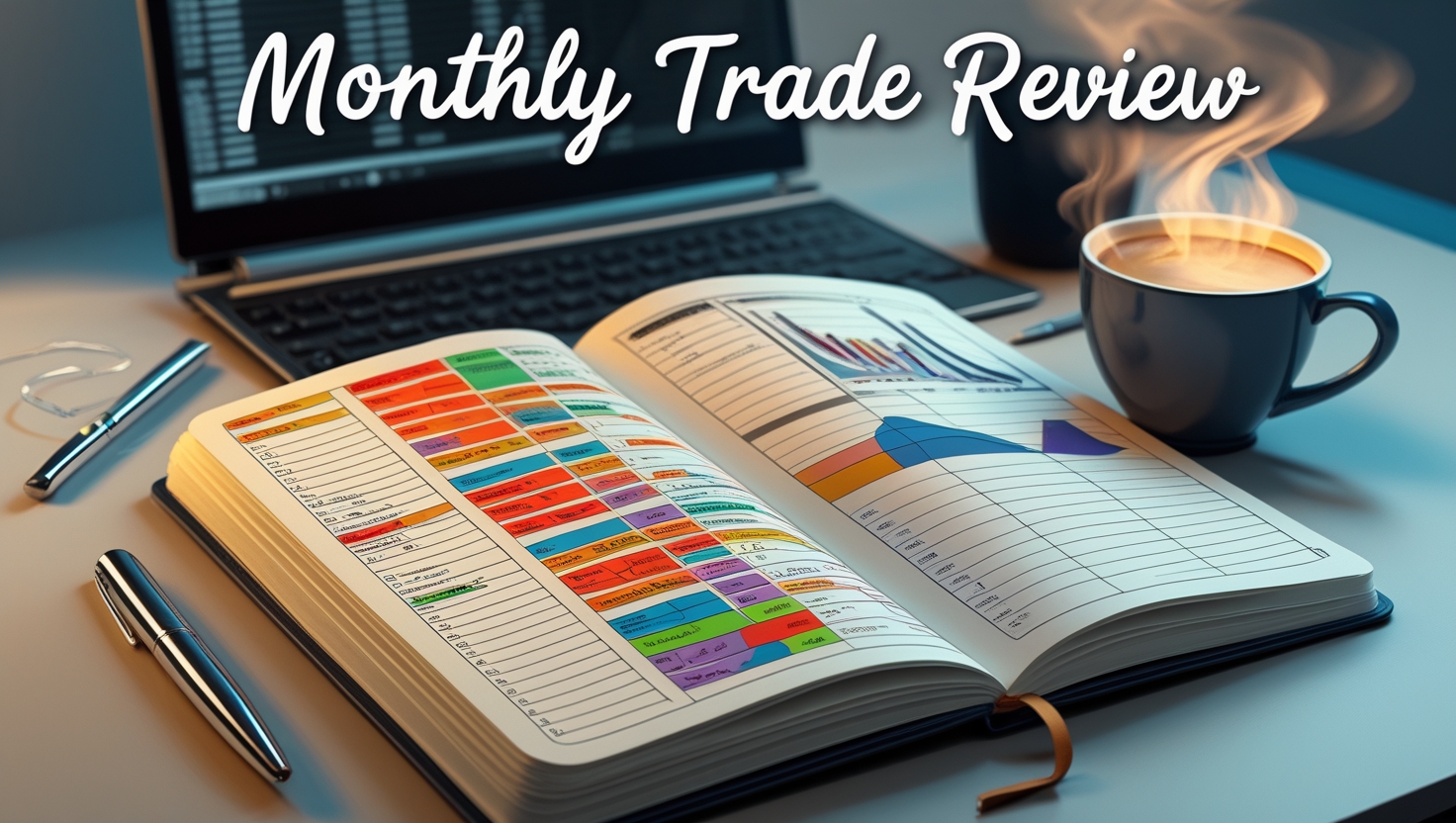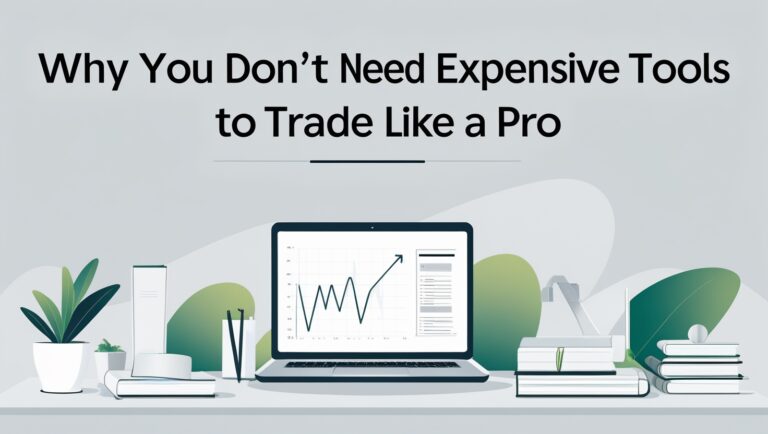How I Track My Trades to Keep Improving Every Month
How I Track My Trades to Keep Improving Every Month
(Even Without Fancy Tools or Spreadsheets)
When I first started trading, I thought the only thing that mattered was finding the perfect setup. But over time, I learned that how I tracked my trades was just as important as the trades themselves. That’s what helped me go from random results to consistent growth.
And no — I don’t use complex spreadsheets or paid platforms. I keep it simple. Here’s how I track every trade, why it matters, and how it’s helped me actually pay my bills trading stocks.

Table of Contents
Why Trade Tracking Changed Everything for Me
In the beginning, I wasn’t tracking anything. I’d take a trade, win or lose, and move on. But months passed, and I realized… I had no idea what was actually working. That’s when I built a habit of writing down every trade — and that one change helped me start improving weekly.
When you track trades, you stop guessing and start learning. You begin to see patterns in your wins and your mistakes. And once you see them, you can adjust with confidence.
What I Write Down After Every Trade
I don’t overcomplicate things. I use a basic Google Doc with these columns:
- Ticker
- Date & Time
- Entry and Exit
- Why I Entered
- What Happened
- Did I Follow My Rules?
- Lesson Learned
This takes me less than 2 minutes per trade, but it gives me massive clarity at the end of each week.
I Review Everything on Sundays
Every Sunday night, I spend 15 minutes reviewing the trades I took that week. I ask myself:
- Did I stick to my rules?
- What setups worked best?
- Which mistakes did I repeat?
- Was there a pattern in my losses?
This weekly review became a game changer. I don’t just take notes — I take action based on them.
Why This Works (Even If You’re a Beginner)
You don’t need to be a pro trader to start tracking your trades. In fact, the sooner you start, the faster you’ll grow. You’ll get in the habit of being accountable to yourself — and that’s what separates gamblers from real traders.
Trading isn’t about winning every time. It’s about learning from every outcome and adapting. Your trade journal will show you the way.
How I Stay Consistent Without Fancy Software
I know there are trading platforms with advanced analytics, but honestly, I don’t need all that. I’m not managing a hedge fund. I’m managing my time, my focus, and my results — and a basic doc helps me do that just fine.
Keeping it simple helps me actually use it. No overwhelm. Just results.
My Ebook Breaks This Down Even More
In my ebook, “How I Pay My Bills With Simple Stock Setups,” I walk through my full trading routine — from watchlist building to entry criteria, risk control, and how I track each trade without stress.
If you’re serious about trading, this ebook will give you the clarity I wish I had when I started.
Final Thoughts
If you’re not tracking your trades, you’re trading blind. It doesn’t matter how good your strategy is if you don’t know what’s actually working.
By keeping a simple journal and reviewing it each week, I’ve been able to stay consistent, spot my edge, and avoid the bad habits that used to cost me money.
That’s how I’ve kept growing as a trader — and how I’ve paid my bills doing it.
1. Trade Tracking Helped Me Build Confidence
Once I started seeing my progress written out — the wins, the better entries, the smarter exits — I stopped doubting myself so much. There’s something powerful about seeing your improvement on paper. It gave me the confidence to size up slowly and take better trades, even when the market felt shaky.
2. I Also Track My Emotional State
Most people don’t do this, but I write down how I was feeling before, during, and after each trade. Was I anxious? Overconfident? Rushed? Tired? This helped me see that some of my worst decisions came when I wasn’t in the right mindset — and now, I know when not to trade.
3. I Track the Time of Day
Over time, I realized I make most of my winning trades between 9:35 and 10:00 AM. I started avoiding late-morning chop because I saw a clear pattern in my journal: the longer I sat at the screen, the more mistakes I made. Now I use that data to stay disciplined.
4. I Use Color-Coding for Fast Insights
Wins are green, losses are red, and breakeven trades are yellow. It sounds simple, but this made scanning my weekly results super easy. A week full of green tells me I’m on the right track — a week of red means it’s time to slow down and review deeper.
5. I Track Setup Types Separately
Every trader has a few favorite setups. I started tracking which specific pattern or idea I was using — like “gap and go,” “reversal,” or “pullback on trend.” Over time, I learned that one setup made up 80% of my best trades. So now I focus more on that one and ignore the rest.
6. Reviewing My Worst Trades Helped the Most
It’s tempting to skip over your worst trades, but those are gold. I force myself to look at what went wrong. Did I chase? Did I ignore volume? Did I break my own rules? I’ve found that fixing one mistake each week added up faster than trying to be perfect.
7. I Include Screenshots When I Can
When a trade is worth reviewing, I take a quick screenshot of the chart and add it to my journal. It helps me visually remember the setup and reinforces what to look for — or avoid — next time.
8. I Started Noting the Market Conditions
Sometimes the trade was good, but the market wasn’t moving. I now make quick notes like “choppy day,” “news-driven move,” or “low volume overall.” This taught me that it’s not always me — sometimes the environment isn’t ideal for my style.
9. My Journal Shows Me When to Stop Trading
There were weeks where I noticed a pattern: my first few trades were great, but my last few were sloppy. Now, I use that info to set a trade limit per day. I don’t overtrade like I used to — because my journal proved it doesn’t help.
10. It Keeps Me Accountable
When I started tracking trades, I couldn’t lie to myself anymore. If I broke a rule, it was written down. If I didn’t follow my plan, I had to face it. This forced me to grow faster than anything else I’ve done.
11. It Helps Me Stay Focused
Knowing I’m going to review every trade later makes me focus more in the moment. I ask myself before entering: “Would this make sense in my journal?” If the answer is no, I skip it. That small habit saved me from a lot of bad decisions.
12. My Ebook Has My Full System
If this sounds helpful, I break it all down in my ebook: “How I Pay My Bills With Simple Stock Setups”. You’ll get my trade tracking method, my entry checklist, and the exact routine I use every morning — no fluff, just what actually works. Whether you’re new or stuck at break-even, this ebook will give you the clarity to level up your trading without adding more stress.

Stay ahead in the stock market! Subscribe to our newsletter and receive exclusive stock flow reports, trading insights, and actionable tips directly in your inbox. Join thousands of traders who get our updates first.







